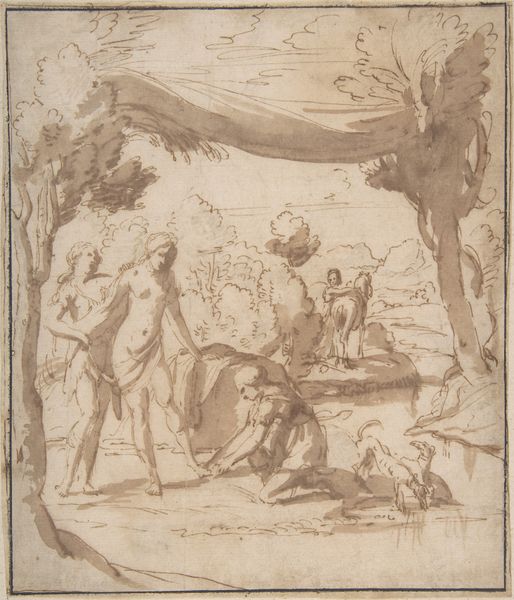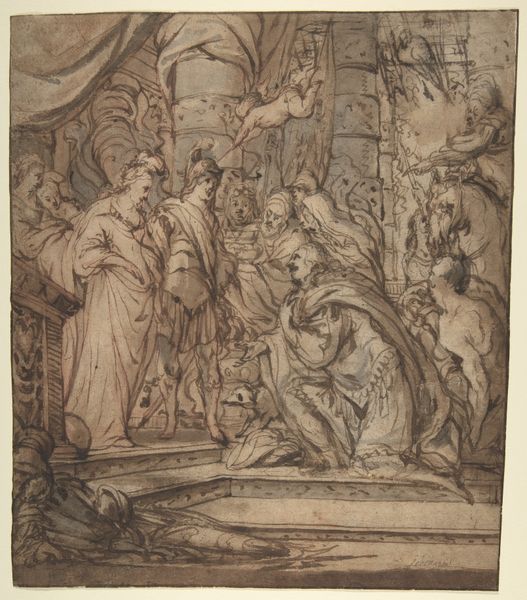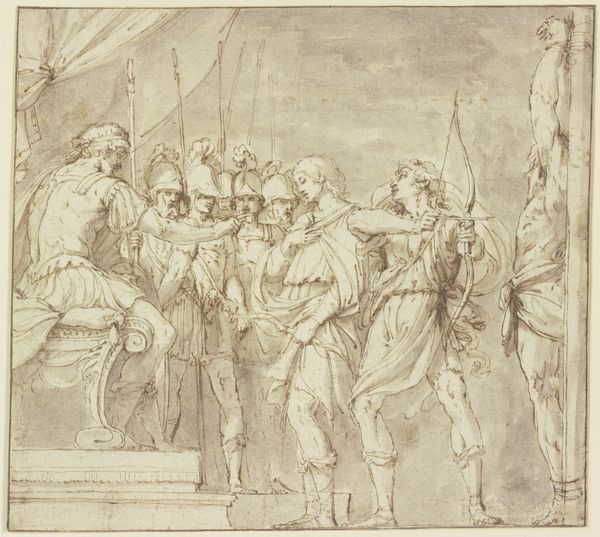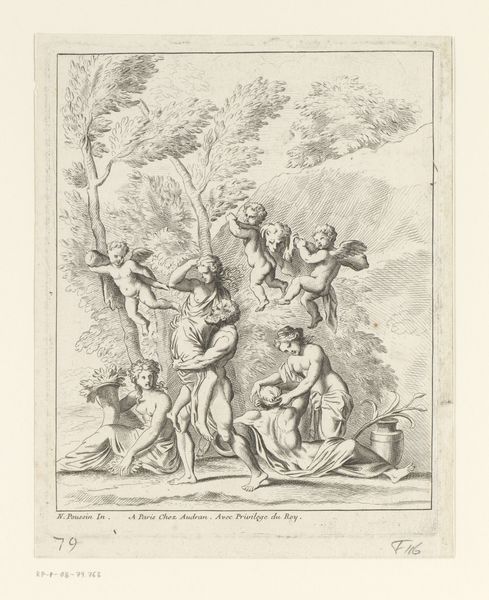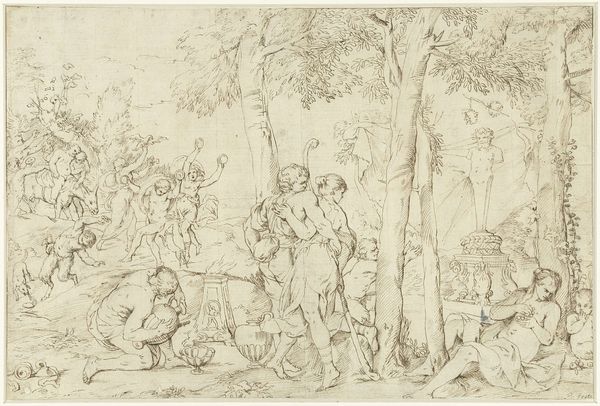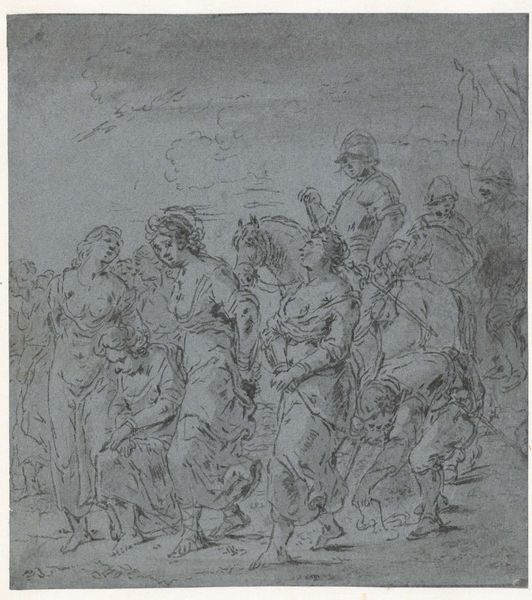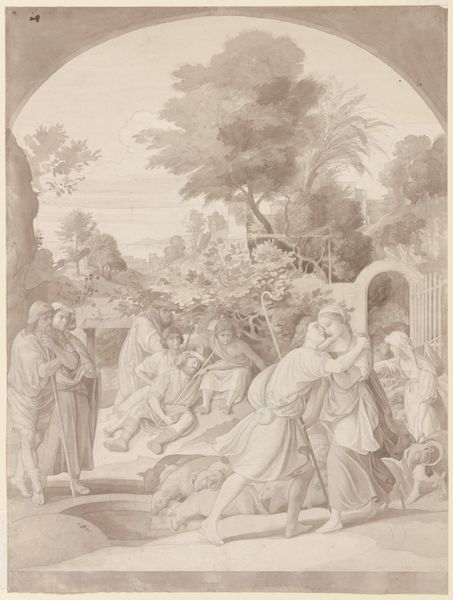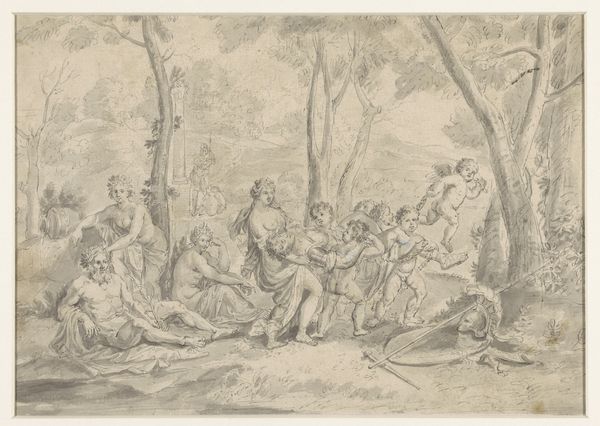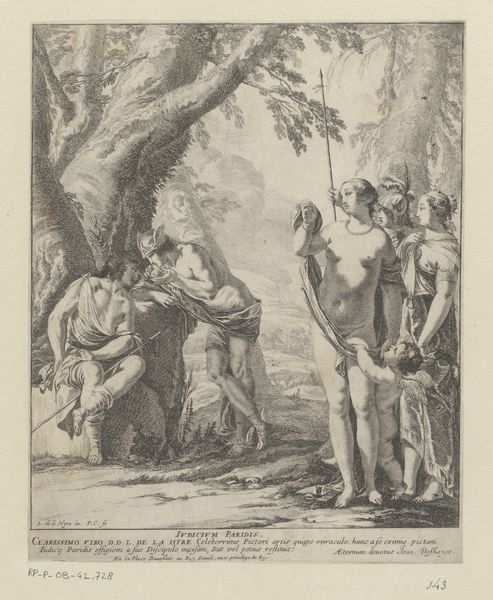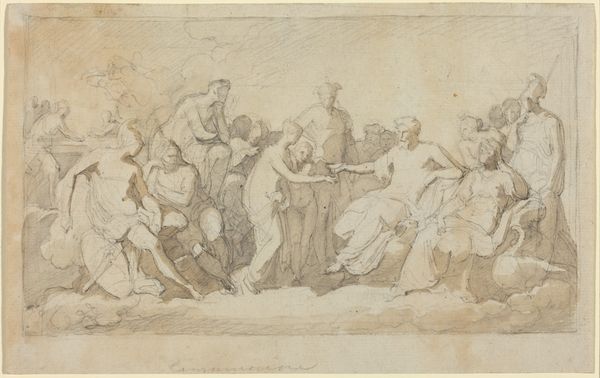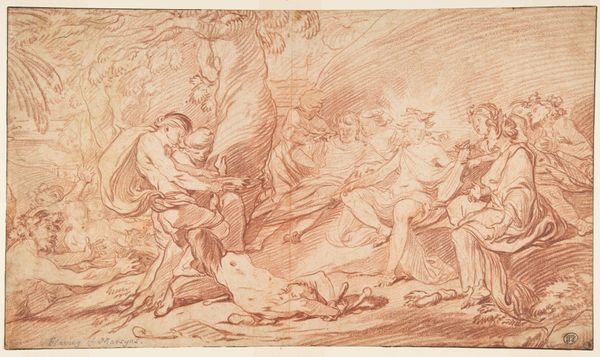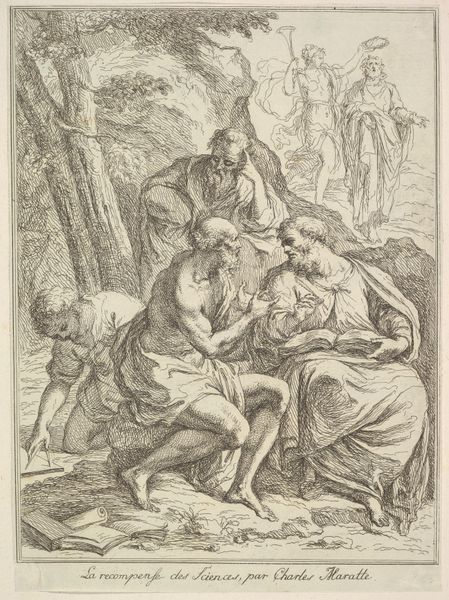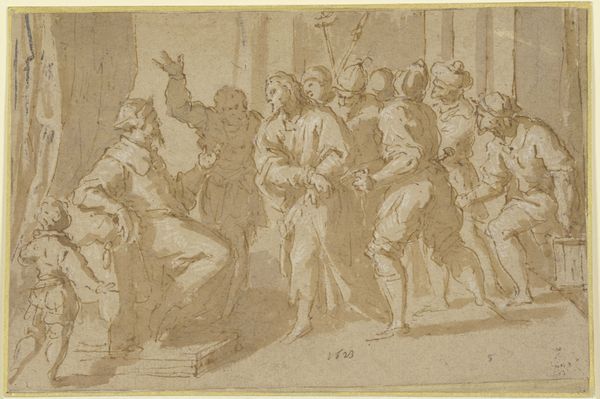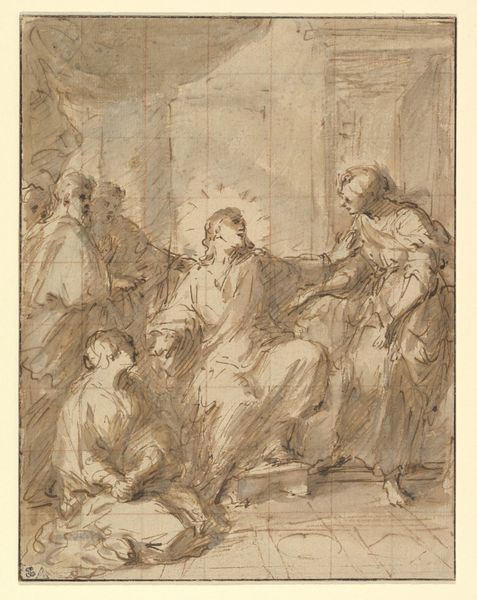
drawing, print, ink, pen
#
drawing
#
ink drawing
#
narrative-art
#
baroque
# print
#
figuration
#
ink
#
pen
#
history-painting
Dimensions: 10-7/16 x 8-9/16 in. (26.5 x 21.7 cm)
Copyright: Public Domain
Curator: Here we have an intriguing pen and ink drawing entitled "Joseph Sold by His Brothers." Although the artist remains anonymous, we know this work was created sometime between 1600 and 1700, reflecting a Baroque sensibility. Editor: My immediate impression is of controlled chaos. The lines are delicate, yet the composition feels packed, full of movement and obscured intentions. What do you see in the formal structure? Curator: I see a reflection of the turbulent socio-political landscape of the 17th century, especially as the Dutch Golden Age witnessed both incredible artistic achievements alongside brutal colonial practices. Joseph's story, fraught with familial betrayal and eventual triumph, resonates with that duality. The composition's crowded nature, rendered in such delicate ink work, might speak to the conflicting narratives vying for dominance. How does the medium of ink on paper serve the piece formally? Editor: Well, the use of ink allows for precise detailing. But more interestingly is the contrasting use of washes. Lighter washes create spatial depth in the background compared to the denser shading defining the foreground figures. This emphasizes the emotional drama unfolding within the group. I think you're right to highlight its potential connections with sociopolitical tensions through the artwork's thematic content and title, especially since these biblical narratives were used for propagandistic and political purposes. Do you think the anonymity adds another layer? Curator: Absolutely. The lack of a known author shifts the focus. Instead, we can interpret it as a collective expression. I agree with the attention to the figure's relationship with its ground. Considering the source narrative, what readings can emerge through the identity, gender, and race of Joseph and his brothers? Editor: The emphasis on light and shadow, in that sense, becomes a vehicle for emotional resonance. The clustered poses and intense glances also work toward dramatic effect, emphasizing conflict and betrayal. Even with only a muted palette, you find the stark contrast guiding our reading, like a stage setting. The spatial dimensions also lead toward a narrative that places Joseph at the center and the viewer as implicated witnesses of an important, formative history. Curator: Indeed, looking closely, one may ask whose gaze are we occupying and complicit with? The brother's? Or Joseph’s? Thinking about these formal constructs pushes to new and nuanced avenues to read the work as a whole. Editor: A fascinating tension to consider—thank you.
Comments
No comments
Be the first to comment and join the conversation on the ultimate creative platform.
